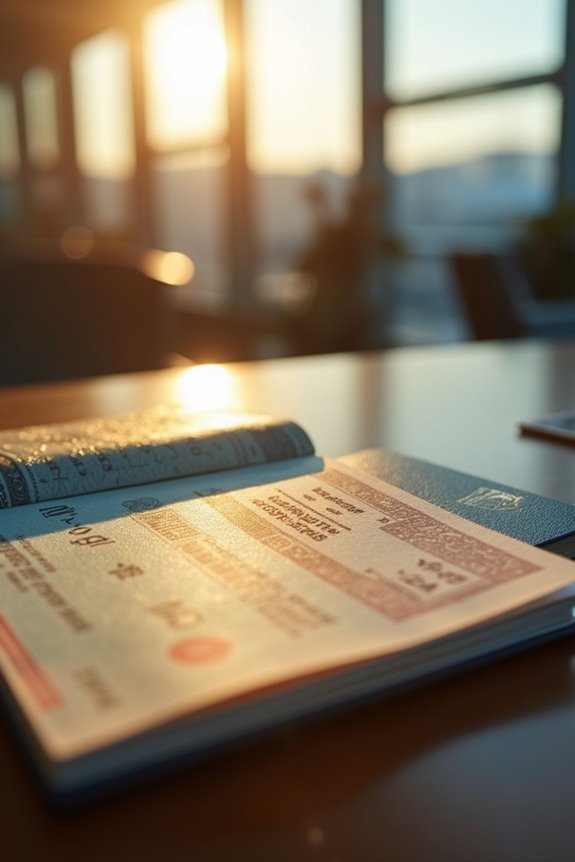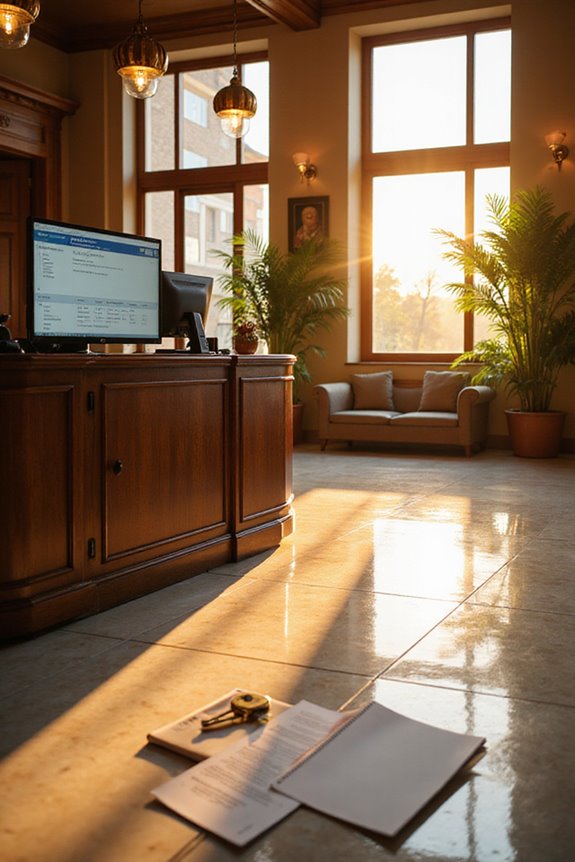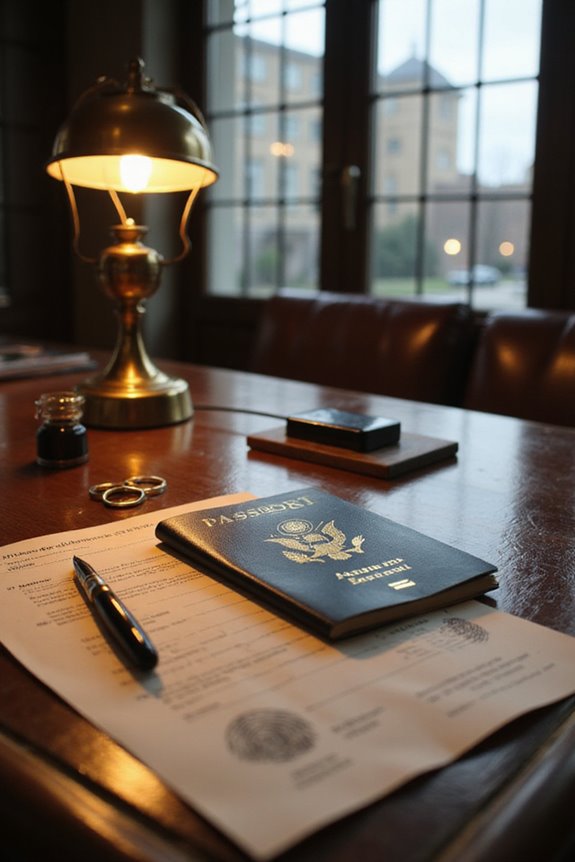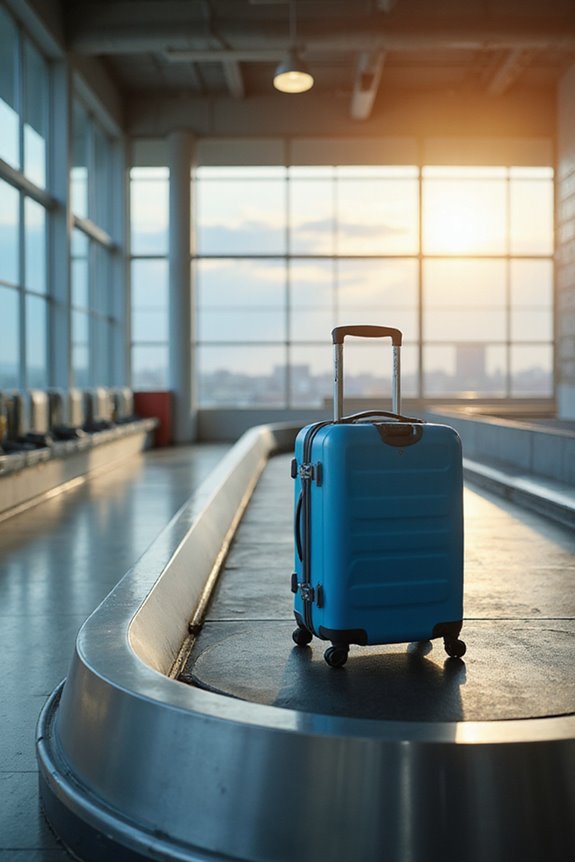When you’re getting a tourist visa, there’s a few key things to keep in mind. First off, your passport needs to be valid for at least six months beyond your stay. Don’t forget to fill out the right visa application form and pay the fees, as they’re usually non-refundable. Plus, you might need up-to-date vaccinations and supporting docs, like a travel itinerary. It can feel overwhelming, but trust me, sticking to these requirements makes things smoother. Want to know more?
Key Takeaways
- Complete the specific visa application form (e.g., DS-160 for the US) accurately to avoid delays.
- Provide a recent passport photo with a plain background as part of the application.
- Submit supporting documents like travel itineraries and proof of funds to demonstrate your travel intentions.
- Ensure your passport is valid for at least six months beyond your planned stay to meet entry requirements.
- Pay attention to health requirements, including vaccinations, to avoid complications during your trip.
Passport Validity Requirements

When you’re gearing up for a trip, one of the first things on your mind (or at least it should be) is your passport’s validity. Trust me, you don’t want to get to the airport only to discover your passport expiration is looming. Many countries require it to be valid for at least six months beyond your stay. I learned this the hard way during a trip to Thailand—my passport was just a few weeks short! Airlines can deny boarding if your passport doesn’t meet the requirements, so it’s vital. Always double-check that you’ve got travel insurance too, just in case. It’s all about ensuring your adventures don’t come to a screeching halt because of a simple oversight!
Visa Application Forms and Fees
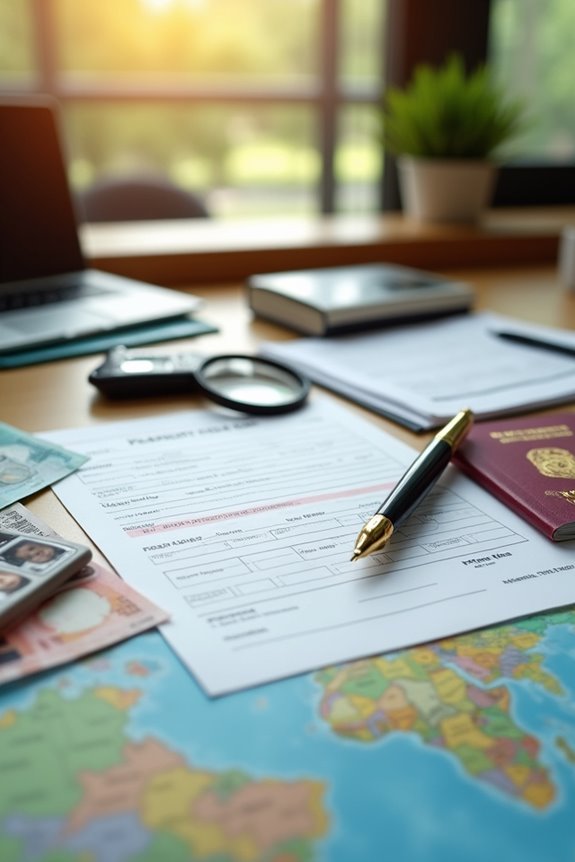
Now that you’ve made sure your passport is in good shape, it’s time to tackle the next big item on your travel checklist: the visa application forms and fees. First, you’ll usually find a specific form online—you might need something like the DS-160 for the US. Make sure every detail is spot-on; mistakes can slow you down. After filling it out, you’ll often pay processing fees, which are usually non-refundable, even if your application gets denied!
Don’t forget that most places require a recent photo with a plain background, and you’ll need supporting documents like your itinerary and proof of funds. So grab that checklist because every step counts!
Electronic Travel Authorization Systems

While planning my last trip, I couldn’t help but realize how essential Electronic Travel Authorization (ETA) systems have become in today’s travel landscape. Honestly, these global systems, like the US’s ESTA or Canada’s eTA, save so much time and hassle for travelers. They act as a clever pre-screening tool, linking digitally to your passport, while checking for security risks. The ETA benefits are pretty clear—getting a decision often within minutes means I’m not left waiting and worrying! However, it’s vital to remember that an ETA doesn’t guarantee entry; border officials still have the final say. With countries like Australia and New Zealand also using these systems, I feel much safer and more organized heading to my next adventure!
Documentation Requirements
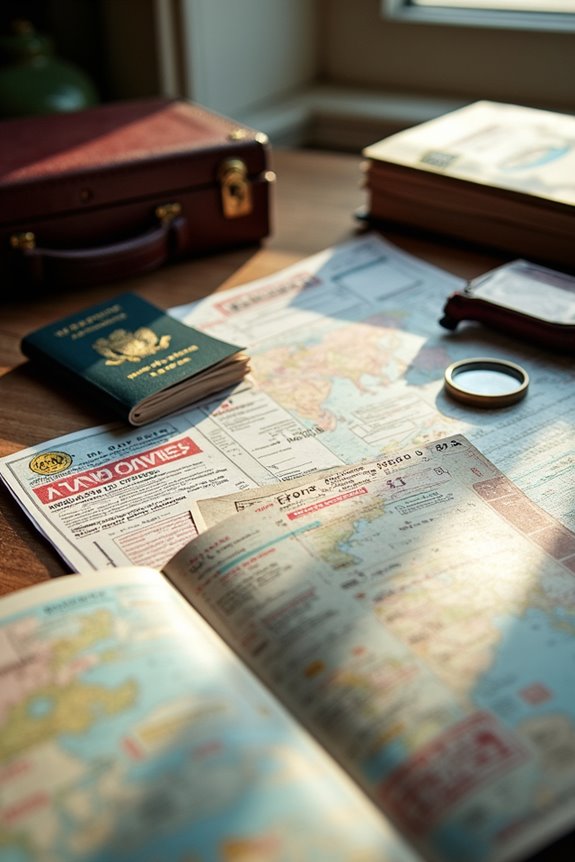
Getting all your ducks in a row for a tourist visa can feel a bit like preparing for a big exam—there’s a lot to remember, and no one wants to fail. The first hurdle is the documentation types; you’ll need a valid passport, copies of it if requested, and even a recent photo that meets specific guidelines. Don’t forget the completed Form DS-160 and the visa fee receipt. Then there’s proof of funds—like bank statements—plus employment letters or business docs if you’re self-employed. Finally, a clear travel itinerary, hotel bookings, or an invitation letter might be required. It sounds overwhelming, but once you tackle each piece, you’ll feel much more prepared for your trip!
Entry and Stay Conditions
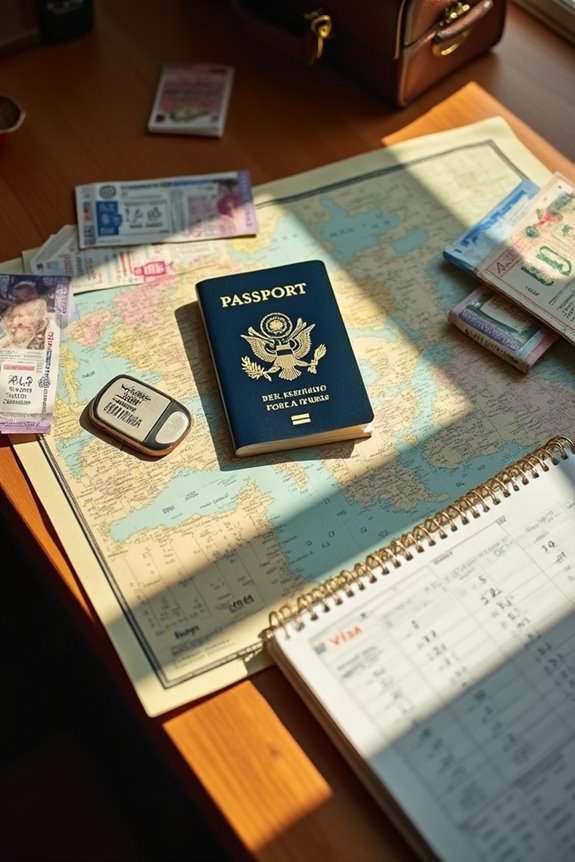
After you’ve gathered all your documentation for that tourist visa, it’s a good idea to brush up on the entry and stay conditions—think of this as the stepping stone to revealing your travel dreams! First up, entry eligibility: most folks need a B-2 visa unless you’re eligible for the Visa Waiver Program (VWP). If you’re part of the VWP crew, just remember to get your ESTA approval. Now, let’s talk about stay limitations. You’re looking at a max of 90 days, and don’t even think about extending your time if you’re on the VWP. Plus, you’ll need a round-trip ticket to leave! So, prepare to soak up those sights, but plan your exit too!
Health and Security Requirements
So, what do you need to know about health and security requirements when you’re planning that dream getaway? First off, make sure you’ve got up-to-date vaccinations, like Hepatitis A and B. Trust me, nobody wants to end up with a surprise medical exam or worse, being flagged for communicable diseases like tuberculosis! Also, if you’re pregnant, be prepared for extra scrutiny; you’ll likely need to show consent for chest X-rays—don’t worry, they’re safe! And while health insurance isn’t always mandatory, it’s a lifesaver. One hospital stay can cost a small fortune—around $30,000 in the U.S. alone! Cover yourself; it’s better to be safe than sorry when you’re adventuring abroad.
Tips for a Successful Application
When you’re diving into the world of visa applications, it’s essential to be as sharp as a tack, especially since little details can make or break your chances. Start by crafting a detailed travel itinerary that outlines specific dates, locations, and activities—showing you’ve got a solid plan. And don’t forget to align it with your flight tickets and accommodation!
Now, about that interview preparation: practice makes perfect. Answer confidently about your travel purpose and remember to be yourself; steer clear of interpreters. Double-check your application for any errors, and keep your supporting documents up-to-date. Trust me; inconsistent info can lead to denial. Finally, showing strong ties to your home country can reassure them you’ll return. Good luck!
Understanding Visa Types
Understanding visa types can feel like trying to navigate a maze, especially since each one serves a unique purpose and has its own quirks. With all the visa distinctions out there, the B-2 visa is specifically for tourism, while the B-1 is for business—it’s like choosing between a hotel or an office! Sometimes, you might even find a combined B-1/B-2 visa handy for mixing work and play. Plus, there are single-entry and multiple-entry options; the latter lets you pop in and out multiple times, which is great for those spontaneous adventures. Just remember, each entry category has its own rules, so it’s best to double-check those specifics before packing your bags and heading out!
Common Pitfalls to Avoid
Maneuvering the maze of visa applications can be tricky, and it’s all too easy to stumble into common pitfalls that could derail your travel plans. I remember filling out my first application, feeling confident, only to realize I’d left a field blank—instant denial! Trust me, application errors like typos or mismatched dates can make you look untrustworthy. And don’t even get me started on documentation discrepancies; outdated or irrelevant papers can kill your chances faster than a travel delay! Always double-check your documents, and stay consistent throughout. Missed deadlines or ignoring communication? That’s a sure way to let your dream vacation slip through your fingers. So, stay engaged and keep everything tidy, and you might just secure that visa!
Frequently Asked Questions
What Should I Do if My Visa Application Is Denied?
If my visa application’s denied, I’d carefully review the reasons for denial, consider the visa appeal process, and gather supporting evidence to strengthen my case for reapplication or reconsideration. Seeking expert advice might help, too.
Can I Work on a Tourist Visa?
I can’t work on a tourist visa due to strict working restrictions. Engaging in any employment, paid or unpaid, jeopardizes my visa status. It’s essential to respect these rules while enjoying my time in the U.S.
How Long Does the Visa Approval Process Take?
Visa processing times can vary greatly; I’ve found that submitting my application early and ensuring everything’s complete really helps. Following these application submission tips always made my process smoother and quicker than I expected.
Are There Age Restrictions for Applying for a Tourist Visa?
I’ve learned there aren’t universal age restrictions for applying for a tourist visa. Minor applicants usually need parental consent, but they often benefit from interview waivers, making the process easier for younger travelers.
Can I Change My Visa Status While Abroad?
Like a ship at sea, I’ve realized changing my visa status abroad isn’t possible. Instead, I need to guarantee my visa validity and apply for a new visa at a consulate if my status needs changing.

